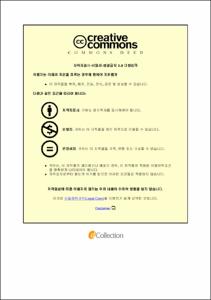중국 정치 엘리트의 변동에 관한 연구
- Alternative Title
- A Study on the Change of Chinese Political Elite: Focused on th 11th~18th Central Committee Members of CCP
- Abstract
- The main purpose of this thesis is to analyze the variety of Chinese political elite from 1977 to 2017. During this 40 years, China has been governed by 4 top leaders which is the 2nd generation leader Deng Xiaoping, the 3rd generation leader Jiang Zemin, the 4th generation leader Hu Jintao, the 5th generation leader Xi Jinping.
However, Hua Guofeng was the inheritor committed by Mao Zedong and had been owning a great power as a chairman of the CCP(China Communist Party) until he lost battle in the Third Session of the Eleventh Central Committee of the CCP. So I can reasonably divide this time in to 5 eras and analyze the different character of Chinese political elite group between every period. Also there are 3 theories for socialism country which can illustrate the character of political elite in China while constituting the main analytical framework of this thesis.
Firstly, the Factionalism Model. Emphasizing the relationship between the leader and member under one faction. Secondly, the Red Theory. Emphasizing the faith and loyalty toward communist party. Finally, the Technocracy Theory. Emphasizing whether the officer possess the knowledge or technology. According to this three theories and historical background in each period, the variety of Chinese political elite can be suggested into assumption. At the 4th and 5th part of the thesis I will use comparative analysis and regression analysis to verify the hypotheses. For the object of study, it is rational to regard Central Committee Member every period as China political elite not only they come from high levels of party, government, or army but also have the Decision-making power in CCP. In the last part of the thesis the conclusion will be drew according to the result of analyzation.
- Issued Date
- 2018
- Awarded Date
- 2018.2
- Type
- Dissertation
- Publisher
- 부경대학교
- Alternative Author(s)
- XUE CHENG
- Affiliation
- 부경대학교 대학원
- Department
- 대학원 정치외교학과
- Advisor
- 차재권
- Table Of Contents
- Abstract v
Ⅰ. 서론 1
1. 연구의 배경 1
2. 연구의 방법 및 범위 3
3. 선행 연구 검토 5
4. 연구의 분석틀(Analytical Framework) 14
Ⅱ. 이론적 배경 17
1. 고전적 엘리트 이론과 중국 정치 엘리트 변동 17
2. 정치 투쟁에 관한 파벌 모델(Factionalism Model) 21
3. 홍(紅) 및 전(專)의 분쟁 24
Ⅲ. 중국 정치 엘리트의 시기별 특성 34
1. 후 마오 시기(1977∼1982) 34
2. 덩샤오핑 집권 시기(1982∼1992) 39
3. 장쩌민 집권 시기(1992∼2002) 48
4. 후진타오 집권 시기(2002∼2012) 54
5. 시진핑 집권 시기(2012∼2017) 61
Ⅳ. 중국 정치 엘리트 변동요인 분석을 위한 변수·가설·모형· 데이터 분석 72
1. 가설설정 72
2. 독립변수의 설정과 측정 73
3. 종속변수의 설정과 측정 75
4. 데이터 수집 및 데이터 특성 분석 77
5. 회귀분석 모형의 구축 85
Ⅴ. 분석 결과와 함의 88
1. ‘입당~중앙위원 승진기간’ 모형의 분석 결과 88
2. ‘입당~후보위원 승진 기간’ 모형의 분석 결과 92
3. ‘후보~중앙위원 승진 기간’ 모형의 분석 결과 97
4. ‘중앙위원 보직 유지 기간’ 모형의 분석 결과 102
5. ‘고속승진 여부’ 모형의 분석 결과 107
ⅤI. 결론 112
참고 문헌 115
- Degree
- Master
- Files in This Item:
-
-
Download
 중국 정치 엘리트의 변동에 관한 연구.pdf
기타 데이터 / 940.63 kB / Adobe PDF
중국 정치 엘리트의 변동에 관한 연구.pdf
기타 데이터 / 940.63 kB / Adobe PDF
-
Items in Repository are protected by copyright, with all rights reserved, unless otherwise indicated.